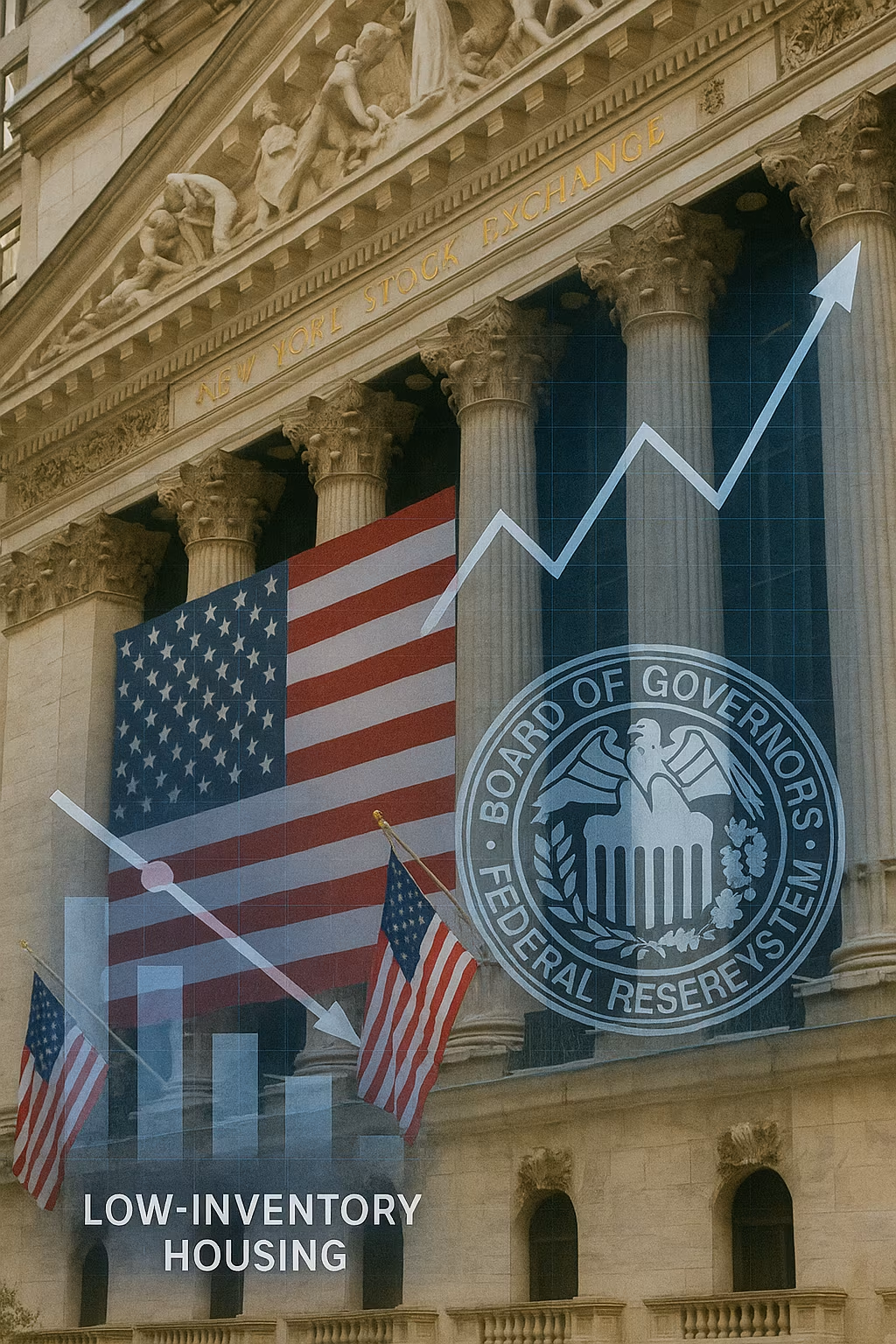U.S. stock markets soared to new all-time highs this week as growing expectations of a Federal Reserve interest rate cut sent a wave of optimism through Wall Street. The rally, driven by tech giants, financials, and consumer-focused stocks, reflects renewed investor confidence that monetary policy will soon shift toward supporting economic growth.
The surge comes amid a combination of easing inflation, signs of a cooling labor market, and commentary from Fed officials suggesting that rate cuts could be on the table in the near term.
A Market Powered by Fed Speculation
The S&P 500, Dow Jones Industrial Average, and Nasdaq Composite all closed at record highs, buoyed by a broad-based rally. Investor sentiment turned sharply positive after recent economic data indicated that inflationary pressures continue to moderate, giving the Federal Reserve more flexibility to ease policy without reigniting price growth.
Bond markets also rallied, with Treasury yields falling as traders priced in a greater likelihood of a rate cut as early as the next two Federal Open Market Committee (FOMC) meetings. According to CME Group’s FedWatch Tool, futures markets now imply a strong probability of at least one rate cut before the end of the year.
Key Drivers Behind the Rally
Several factors have converged to propel the market higher:
- Cooling Inflation Data – Recent Consumer Price Index (CPI) and Personal Consumption Expenditures (PCE) reports showed inflation slowing toward the Fed’s 2% target, reducing pressure on policymakers to keep rates elevated.
- Labor Market Moderation – Job growth remains positive but has slowed from last year’s pace, suggesting that the economy is cooling without falling into recession.
- Strong Corporate Earnings – Major companies in technology, retail, and healthcare have reported better-than-expected profits, boosting confidence in corporate resilience.
- Global Economic Stability – Improved growth prospects in Europe and Asia have reduced fears of a global slowdown, supporting investor risk appetite.
Technology Leads the Charge
The technology sector, which is particularly sensitive to interest rate changes, has been at the forefront of the rally. Lower borrowing costs benefit high-growth tech firms by reducing financing expenses and increasing the present value of their future earnings.
Mega-cap companies in artificial intelligence, cloud computing, and semiconductor production saw their share prices surge, pushing the Nasdaq Composite to its highest level in history.
Financials and Consumer Stocks Benefit
Financial stocks also gained as investors bet on a soft landing for the U.S. economy. While lower interest rates can compress net interest margins for banks, expectations of stronger loan demand and reduced credit risk helped boost the sector.
Consumer discretionary stocks rallied on hopes that lower borrowing costs will encourage spending on big-ticket items such as cars, appliances, and travel. Retailers and entertainment companies saw broad gains, signaling confidence in the health of the American consumer.
The Fed’s Balancing Act
Federal Reserve Chair Jerome Powell and other policymakers have recently acknowledged that rates are “well into restrictive territory” and that further tightening is unlikely. However, they have also emphasized the importance of ensuring inflation is sustainably on track toward 2% before cutting rates.
The challenge for the Fed will be to lower rates enough to support growth without reigniting inflationary pressures. Markets appear confident that the central bank can strike that balance, but analysts warn that overly aggressive cuts could risk undoing progress on price stability.
Risks That Could Disrupt the Rally
Despite the upbeat market mood, risks remain. Any unexpected spike in inflation—driven by energy prices, supply chain disruptions, or wage growth—could force the Fed to delay or scale back rate cuts.
Geopolitical tensions, particularly in major energy-producing regions, could also inject volatility into global markets. In addition, if corporate earnings fail to meet high expectations in the coming quarters, investor sentiment could shift quickly.
Investor Strategies in a High-Market Environment
For investors, record highs present both opportunities and challenges. While momentum is strong, valuations in certain sectors—particularly technology—are stretched, raising concerns about potential pullbacks.
Portfolio managers recommend a balanced approach, combining growth-oriented stocks that benefit from lower rates with defensive sectors such as healthcare, utilities, and consumer staples that can provide stability if markets turn volatile.
Global Impact of a Fed Rate Cut
A Federal Reserve rate cut would have ripple effects across the global economy. Emerging markets could benefit from capital inflows as the U.S. dollar weakens, making their debt more affordable. However, the weaker dollar could also impact trade dynamics, potentially boosting U.S. exports while raising import costs.
Global stock markets have already responded positively to the prospect of U.S. monetary easing, with European and Asian equities rallying alongside Wall Street.
Wall Street’s surge to record highs reflects growing optimism that the Federal Reserve will soon pivot toward a more accommodative stance. Lower interest rates could extend the current bull market, boost corporate profits, and sustain consumer spending, but the path ahead will depend heavily on incoming economic data.
For now, investors are betting that the Fed can engineer a soft landing—slowing inflation without triggering a recession—while markets continue to ride the wave of optimism.





